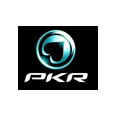Server backup can be tricky. The backup cloud must support all kinds of operating systems and applications. It should be remembered that servers operate in a high traffic environments. They are always connected to the remote backup server in the cloud via the Internet and continuously service the data requirements of the end user. The server platform can include all flavours of Windows, Linux, Unix, Mac OS X, AS-400, Solaris or all kinds of applications such as Exchange/ Outlook, Lotus Notes/Domino, Groupwise, SQL, MySQL, PostgreSQL, Oracle, IBM DB2, Sharepoint or more.
Agentless server backup is preferable. The agentless software requires only a single instance installation of the agent on a network. All servers connected to the network can then be identified and the agent can be configured to accept backup requests from the servers. The entire backup process can be managed and controlled from a single console.
IT Administrators can schedule backups and decide on the granularity of the backup. For instance the IT Administrator can decide that Windows and Linux systems must be backed up continuously and other systems may be backed up as per a fixed schedule. A single backup can be the backup of all data in a server, a share or volume or directory. The backup may also be of a single file or registry. Backups can also be scheduled to start and stop within a specific backup window.
Multiple servers can be backed up in parallel. The multi threaded backup application ensures that the software can process large volumes of data and support concurrent backup and restore requests. The only limiting factor would be the amount of bandwidth that is available with your organization.
The data being backed up to the server can be compressed or deduplicated using compression algorithms that have been tested and proven. The lossless algorithms can reduce the size of the raw data being transmitted from the server and common file elimination protocols can ensure that the same file is not transmitted twice. Versions of files may be stored with appropriate version numbers for ease of discovery. Retention policies can be specified to ensure that only relevant and active files continue to be stored in expensive storage media and other files are relegated to cheaper storage systems to save on costs.
Backup Technology’s Backup for Servers is high performance software that is designed to operate efficiently in high traffic environments with many of the features that have been discussed above. For more information please visit, http://www.backup-technology.com




















